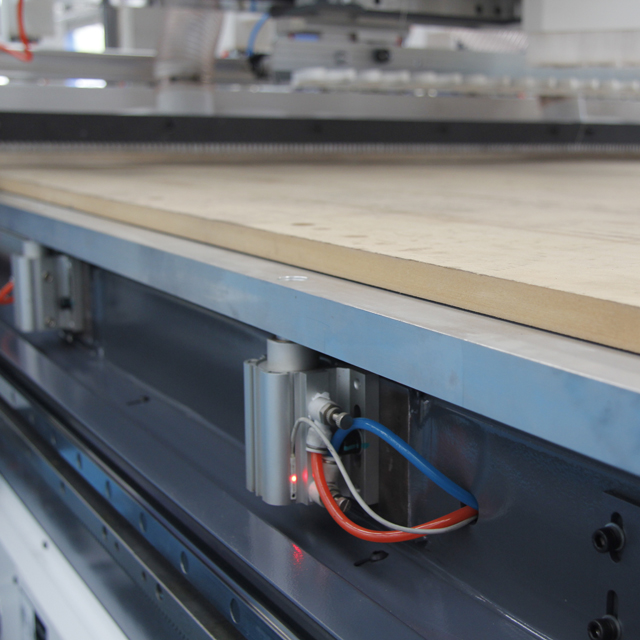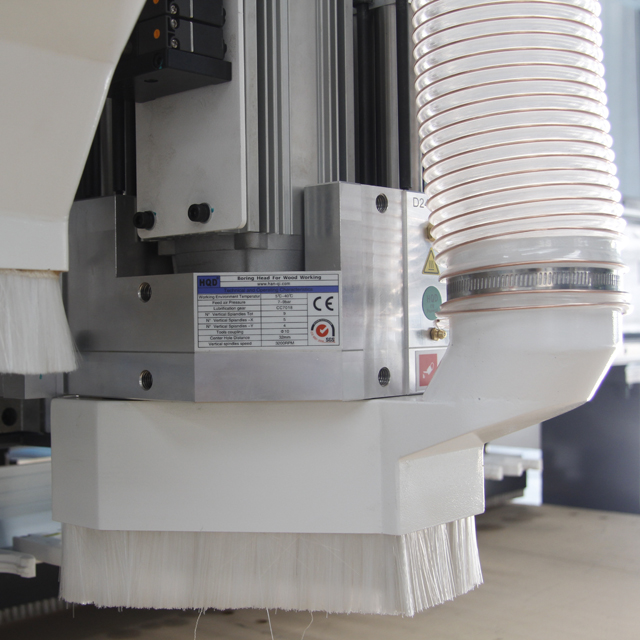close
Choose Your Site
Global
Social Media

Views: 0 Author: Site Editor Publish Time: 2025-07-16 Origin: Site
Ever wondered which machine truly fits your woodworking business — a CNC nesting machine or a traditional wood CNC router?
In a time when automation and precision are key to staying competitive, many manufacturers face this critical choice. The overlap between these two machines often causes confusion. They both cut, engrave, and process wood, but their purpose, structure, and outcomes can be vastly different.
In this post, you’ll learn what distinguishes a cnc nesting machine from a wood cnc router — from structural design to industry application. We’ll break down their functions, automation capabilities, and configuration differences, and guide you step-by-step toward the right machine for your production needs.

A CNC nesting machine is an advanced woodworking solution built for large-scale panel processing. It cuts entire boards into various parts, following optimized layout patterns (called "nesting") generated by design software. These machines usually feature:
Automatic loading/unloading systems
High-speed, high-precision cutting
Multi-zone vacuum tables
Multiple spindles or tool changers
They're ideal for mass custom furniture production, especially for cabinets, wardrobes, and modular units.
A wood CNC router is a more general-purpose tool. It specializes in 2D/3D carving, engraving, and cutting of wood materials. These routers are suitable for:
Decorative carvings
Artistic wood pieces
Relief engraving
Small furniture projects
They come in various sizes and axis configurations (3, 4, 5 axis), and while powerful, they are often manually operated and have fewer automation features.
| Feature | CNC Nesting Machine | Wood CNC Router |
|---|---|---|
| Primary Function | Cutting panels for furniture assembly | Engraving, carving, and small-scale cutting |
| Automation | High (auto load/unload, labeling, nesting) | Low to moderate (manual setup required) |
| Software Integration | Specialized nesting software | General CAD/CAM software |
| Worktable Type | Vacuum zone table for stability | T-slot or partial vacuum |
| Spindle Configuration | Multiple/ATC spindles | Single spindle, some ATC |
| Production Scale | Large-scale, batch production | Small to mid-scale, decorative work |
| Ideal Use Case | Modular cabinet, wardrobe, shelf production | Artistic engraving, signage, prototype making |
A cnc nesting machine is built for full-board processing. It can:
Cut precise shapes from large MDF or plywood panels
Drill dowel or connector holes
Groove slots for cabinet backs or rails
Perform multiple cuts in one run using nesting optimization
Meanwhile, a wood cnc router is more about detail and depth. It can:
Engrave intricate designs and text
Carve 3D patterns and reliefs
Work on curved or cylindrical wood with rotary axes
Be adapted for mold-making and sign-making industries
Nesting machines lead the way in automation.
They usually feature:
Automatic loading arms or suction cups to handle large boards
Conveyor-based unloading tables for finished parts
Labeling systems that print part identifiers
Smart nesting software that reduces material waste
This streamlined workflow is perfect for a factory that needs to process dozens or hundreds of furniture pieces per day.
In contrast, a wood CNC router is more manual. You’ll need to:
Load materials manually
Change tools by hand unless using an ATC variant
Rely on the operator to manage files and layouts
| Material | CNC Nesting Machine | Wood CNC Router |
|---|---|---|
| MDF | ✅ | ✅ |
| Plywood | ✅ | ✅ |
| Solid Wood | ✅ | ✅ |
| Acrylic | ❌ | ✅ |
| Soft Metals (Aluminum) | ❌ | ✅ |
| PVC/Plastic Board | ✅ | ✅ |
| Foam/Foam Board | ❌ | ✅ |
While both machines support various wood-based materials, the wood cnc router supports a broader spectrum — including acrylic, foam, and soft metals, making it ideal for sign makers, prototype designers, and craftspeople.

Nesting CNC machines typically feature:
A heavier bed structure to withstand continuous high-speed cutting
Dual Z-axes or multiple tool spindles
High power ATC spindles (up to 12kW)
Enhanced dust collection and vacuum systems
Whereas wood routers often use:
A lighter frame
Single spindle
Lower-power motors (around 3–6kW)
Basic dust collection
This difference makes nesting machines much more suitable for long-term, high-volume production.
The cnc nesting machine thrives in a digital environment:
Works with nesting optimization software
Supports ERP/MES integration
Allows batch order import/export
Enables dynamic label generation
This is essential for smart furniture factories or smart production lines. You can feed in orders directly and get cut plans, tool paths, and labels auto-generated.
Wood CNC routers, on the other hand, usually use:
ArtCAM, Aspire, Ucancam for design
Basic tool path software without layout optimization
Limited connectivity to large-scale systems
A cnc nesting machine is designed for:
Continuous high-speed operation
Heavy-duty cycles
Durability over years of use
It features reinforced linear guides, dustproof mechanisms, and stable gantry movement, reducing wear and maintenance frequency.
Wood routers, especially low-end models, may experience:
Frame deformation over time
Reduced precision after prolonged operation
Frequent manual tool and material adjustments
Run a cabinet, wardrobe, or modular furniture factory
Require batch panel processing
Want optimized cutting layouts
Need automated material handling
Aim for just-in-time furniture production
Work with custom signs, gifts, or carvings
Need to engrave 2D/3D artwork
Operate a small workshop or prototyping lab
Want to carve non-wood materials like acrylic, aluminum, or foam
Have limited space or budget
Cabinet Manufacturers: Nesting software plans efficient cuts across entire panels, saving material costs.
Flat-pack Furniture Producers: Drill, groove, and cut panels in one cycle.
Smart Woodworking Factories: Connect machines to centralized order management systems.
These setups help save time, reduce waste, and lower dependency on skilled labor.
The shift toward Industry 4.0 means machines like the cnc nesting machine are becoming a staple in automated workshops.
Features like:
Cloud-based nesting
Online order-to-machine systems
Integrated labeling and barcoding
...allow seamless production flow from customer request to final delivery — something traditional CNC routers are not built for.
With so many options on the market, choosing a reliable machine provider is crucial.
DWD offers:
Robust cnc nesting machines designed for longevity
High-speed ATC routers
Friendly control systems even for beginners
One-stop service with installation, training, and tech support
Whether you're upgrading an old system or building a smart factory from scratch, DWD provides dependable, efficient machines to grow your business.
Choosing between a wood cnc router and a cnc nesting machine depends entirely on your business goals.
If you need versatility and creative freedom, a wood router fits well.
But if you aim for streamlined, high-output panel furniture production, the cnc nesting machine is the future-ready choice.
DWD’s cnc nesting machine lineup offers the speed, accuracy, and integration you need to stay ahead.
A: It mainly handles wood-based panels like MDF, particle board, plywood, and melamine boards. It's built for high-speed, large-scale cuts with optimal precision.
A: Yes, simple grooves and patterns can be engraved, but for intricate or deep 3D engraving, a wood cnc router is more suitable.
A: Most systems are user-friendly and come with software-based automation. Basic training is usually sufficient for skilled operators to get started quickly.
A: Absolutely. Many small furniture manufacturers begin with a wood router and transition to nesting systems as production scales.
A: Yes. DWD offers full technical support, including machine setup, software configuration, and troubleshooting to ensure smooth operation from day one.
Copyright 2022 DWD MECHATRONICS CO.,LTD
Sitemap |Technology by leadong.com